Trump Throws Gasoline on the Climate Change Fire


Last week, the White House released its proposal for the 2018 budget, which the Donald Trump administration claims is focused on deficit reduction. Among the many suggestions that could trigger opposition from Congress is the administration’s proposal to sell off half of the oil stored within the Strategic Petroleum Reserve (SPR).
The SPR was built over 40 years ago as a response to the 1973-1974 oil embargo, which OPEC launched in retaliation for America's support of Israel during the Yom Kippur War. Described by the U.S. Department of Energy as the world’s largest supply of emergency petroleum reserves, these underground salt caverns along the Gulf of Mexico can store up to 713.5 million barrels of oil.
The White House proposed selling about half of the reserve’s crude oil holdings over the next decade, which would total about 270 million barrels. Two of the Gulf storage sites would eventually be closed, a move that would shrink the SPR’s maximum capacity to 260 million barrels.
The Trump administration estimates the sale would generate $500 million in revenues next year and $16.6 billion over the next decade, which it says would help reduce the U.S. federal budget deficit. And as U.S. Office of Management and Budget Director Michael Mulvaney told the White House press corps last week, the U.S. won't need those reserves after the administration's plans to boost domestic production reduce the risk of being subjected to future oil shocks.
The administration faces several roadblocks to this massive sell-off. First, as Catherine Traywick and Jennifer Dlouhy of Bloomberg pointed out, the U.S. government by law must maintain a reserve of 450 million barrels. In addition, the International Energy Agency (IEA) has an agreement with its member countries, including the U.S., to maintain a 90-day emergency supply of oil.
Furthermore, despite the promise shown by electric vehicles, the reality is that oil is still integral to the American energy portfolio. Plenty of politicians, who have been spooked in the past by high oil prices after Hurricane Katrina, the 2008 commodities boom and the 2011 Arab Spring, will be eager to score political points and urge the Trump administration not to be lulled into a false sense of security over the three-year slump in oil prices. Then there is the question whether the $16.6 billion in deficit reduction is really worth it: The federal budget deficit for fiscal year 2017 is projected to reach $559 billion.
The energy industry, which includes companies that benefit from their sales to the SPR, will also have their say. Securing America’s Future Energy (SAFE), a group that supports an “all-of-the-above” energy policy, has warned that such a budget move could actually increase the risk that the U.S. economy would be exposed to international oil market disruption and could actually harm long-term energy security.
“While we’ve been lulled into a false sense of complacency by the current period of relatively low oil prices, disruptions and volatility in the oil market are alive and well,” Robbie Diamond, CEO of SAFE, said in a public statement. “The SPR is America’s only formal short-term line of defense against oil supply disruptions and price spikes.”
Of course, there is also the environmental impact that this oil could have it if were released and sold on the markets. Using the Environmental Protection Agency’s carbon emissions calculator, the amount of oil the Trump administration wishes to sell off would generate 116.1 million tons of carbon dioxide -- the equivalent of adding over 10 million cars to America’s roads for a year.
Image credit: Department of Energy
Trump's 3 Percent Growth Projection: Who's In and Who's Left Out?


Annual budget proposals tell a lot about a president. Former President Barack Obama’s cautious optimism for a 2.5 percent uptick in the economy last year was tempered by the lessons of the Great Recession. It was also followed by a 400-plus page report on the challenges the country faces in today’s new economy.
“[The] economy has been changing in profound ways, starting long before the Great Recession,” the Obama administration wrote in its Economic Report in February 2016. “Today, technology doesn’t just replace jobs on the assembly line, but rather affects any job where work can be automated.”
His budget recognized two things: Economic growth isn’t something to be assumed ahead of time, and job growth and economic resilience rely on equal opportunities for all Americans. Those opportunities include not only employment, but also the tools to create small businesses.
Equally telling was the fact that Obama’s 2016 projections didn’t hold true. Economic growth was the worst in years, rising only 1.9 percent as the country began to wrestle with an uncertain election scenario.
President Donald Trump’s latest budget proposal, released a little over a week ago, seems to omit all of that uncertainty. It also reflects some troubling amnesia when it comes to the recession and what fueled the boom-and-bust scenario of 2008.
Trump’s budget forecasts a 3 percent annual growth rate for the American economy. According to some analysts, 3 percent is unrealistic for an economy that is still adjusting to those technological shifts Obama observed.
But it is how Trump plans to boost the economy that attracted the most attention from researchers, who pointed out that Trump’s edits to social programs and tax shifts in favor of the rich is a “been there, done that” scenario.
As Washington Post reporter Max Ehrenfreund observed, supporters of the plan say Obama's focus on mending inequality should be replaced by efforts to "improve the fortunes of Americans across the board."
Gabriel Zucman, an economist with the University of California at Berkeley, summed up the economic outcome of that “across-the-board strategy,” which he said in part began with former President Ronald Regan. “The U.S. has run a big experiment," he told the Post. "It has failed in the most spectacular way.”
To its credit, the Trump administration also wrote measures for America's first Paid Parental Leave Act into its budget. It’s a huge step for a developed nation that has trailed miserably behind developing nations on this track.
The budget also includes proposed reforms to America's student loan programs. But student loan reform is much like healthcare reform: It doesn’t protect the economy unless everyone who needs the service can access it and get help when oversight fails.
Trump also says he plans to expand the Veterans Choice Program. But again, that largely depends on interpretation of what, and how, those services are improved. Will it mean that rural and semi-rural vets, who constitute a substantial percentage of the covered population, will have less difficulty assuring that their doctors’ appointments are actually paid for accurately by the VA?
But allowing parents to take time off for pregnancy, improving health access for veterans or ensuring students can pay loans won't make a difference for every American. From the Trump administration’s point of view, the real transformation will come from measures to reduce the deficit and regenerate a “stagnant” economy (a claim even Trump has contradicted in the past).
Healthcare reform
Trump's proposed healthcare program already cuts out more than 20 million individuals, leaving many with chronic illnesses uninsured. Studies, including this one from the National Institutes of Health, show that chronic illnesses affect workplace productivity. How can an incomplete healthcare coverage program not impact the economy negatively?
Energy development
Trump proposes regenerating coal-based energy networks that regenerate America's dependence on fuels that are unsustainable for the environment, the industry (if we look past more than a few decades) and get in the way of expanding cleaner, less expensive energy.
Regulatory rollbacks
Similar rollbacks of consumer protections have in the past cost Americans homes, jobs and safety. Trump proposes (and has already begun) lifting regulations put in place after the recession to guard against business indiscretion.
Regulatory oversight
Trump’s call for regulatory oversight of “every single dollar” is laudable. But does it include administrative actions to make sure they aren’t ensnarled in legal complexities?
Thanks to the inveterate counters who have been keeping tabs on court cases, the number of lawsuits lodged against the Trump administration (and Trump himself) is now well over 100. Is the same amount of oversight and research being applied to reducing financial impact in the courtroom as in the Executive Branch’s essential agencies?
Immigration reform
But it is Trump’s immigration policy that has many small businesses and farmers flummoxed. How can removing, deporting, and limiting minimum-wage farm labor and laborers who have been the essential backbone for American businesses help the economy?
In the last few months, several companies examined that question and began leaving for Mexico, noting that wages paid there are as little as a fifth of what they shell out in the U.S.
With a promise to revise the tax code, the Trump administration is hoping to lure many companies back. How he will address the vacancy that will be left with a bold push for immigration reform that locks out a major portion of manpower is yet to be seen. That’s to be expected, say analysts, with a budget that is, at best, lacking in transparency and a long way away from being written in stone.
Image: Rennett Stowe
Volvo Will Eventually Ditch Diesel In Favor of EVs


Expect fewer diesel cars on European roadways in the future thanks to Volvo, which pledged to eventually ditch these models in favor of electric vehicles (EVs).
"From today's perspective, we will not develop any more new-generation diesel engines,” Volvo CEO Hakan Samuelsson told Germany’s Frankfurter Allgemeine Zeitung (FAZ).
However, Samuelsson told Reuters in an email that diesel will still play a role in the near future. “We have just launched a brand new generation of petrol and diesel engines, highlighting our commitment to this technology. As a result, a decision on the development of a new generation of diesel engines is not required,” he told Reuters.
He told FAZ that Volvo will continue to work on improving its current range of diesel engine cars, introduced in 2013, to meet emissions standards and production will likely continue until about 2023.
The carmaker will need diesel until 2020 to meet EU carbon emission limits, Samuelsson said. But after that, the cost of making diesel vehicles compliant with regulations would be too high to be worth it.
Volvo announced in 2015 that it would develop a new range of EVs and have its first fully electric car for sale by 2019. Back then, Volvo projected EVs to make up 10 percent of its sales by 2020, Samuelsson said in a statement. “We believe that the time has come for electrified cars to cease being a niche technology and enter the mainstream."
It seems Volvo may even want to compete with Tesla. “We have to recognize that Tesla has managed to offer such a car for which people are lining up. In this area, there should also be space for us, with high quality and attractive design,” Samuelsson told Reuters.
At the SAE 2017 Hybrid and Electric Vehicle Technologies Symposium in San Diego, Volvo announced that its first all-electric car -- to be released in 2019 -- would support battery packs of up to 100 kilowatt-hours, Electrek reported. That could give the car over 300 miles of range, which is something Tesla offers in its Model S and X.
Fewer diesel cars on the road is a good thing
Diesel may be touted as “clean,” but it is not as clean as some may think. Nitrogen oxide (NOx) emissions from new diesel passenger cars tested for an analysis in 2014 by the International Council on Clean Transportation were about seven times higher than the limits set by the Euro 6 standard. NOx emissions contribute to the formation of smog and ozone.
Diesel fuel oil made up 21 percent of total petroleum consumption by the American transportation sector. And most diesel fuel is refined from crude oil, according to the U.S. Energy Information Administration.
Diesel cars account for much more of the car market in Europe than they do in the U.S. Over 50 percent of new registrations in EU member states were for diesel cars in 2013, according to statistics compiled by Eurostat.
Less diesel on the road in Europe sounds like a good thing. Anyone who has ever been behind a bus powered with so-called clean diesel has to question how clean it really is as the smell is quite pungent. And given the seriousness of climate change, diesel cars represent the dirtier past while EVs represent the cleaner future.
Image credit: possan/Flickr
Imported Cooked Chicken . . . Coming to a Store Near You?


Cooked chicken from China may soon be a mainstay in American grocery stores.
The U.S. federal government will soon allow imports of cooked chicken from China, which will give U.S. beef producers access to China’s market of almost 1.4 billion people. Import rules should be finalized by mid-July, giving the green light to American beef producers and Chinese exporters.
U.S. Secretary of Agriculture Sonny Perdue hailed the agreement between China and the U.S. as “tremendous news for the American beef industry, the agriculture community and the U.S. economy in general.”
American beef has been locked out of the Chinese market since 2004 after mad cow disease cases popped up in the U.S. “We will once again have access to the enormous Chinese market, with a strong and growing middle class, which had been closed to our ranchers for a long, long time,” Perdue said.
Beef trade groups are naturally giddy with excitement. “We strongly welcome the announcement that an agreement has been made to restore U.S. beef exports to China,” Craig Uden, president of the National Cattlemen’s Beef Association, said in a statement. “It’s impossible to overstate how beneficial this will be for America’s cattle producers. . . . We look forward to providing nearly 1.4 billion new customers in China with the same safe and delicious U.S. beef that we feed our families."
The U.S. Meat Export Federation appears equally thrilled. "The USMEF and its members greatly appreciate the efforts of the Trump administration and officials at USDA and USTR that made today’s announcement possible,” the trade association said in a statement.
American chicken producers are also eying the changes, even though they mean more initial competition in the U.S. chicken market. American chicken is still banned in China following concerns about avian flu, but it might open up in the future given these market shifts.
Jim Sumner, president of the USA Poultry and Egg Export Council, told USA Today that opening up the Chinese market for U.S. chicken producers trumps concerns about Chinese competitors entering the markets stateside. “It’s more important for us get that market back,” he said. “We can’t produce enough chicken wings to satisfy demand here. So it’s all good. We’re glad to see it happen because our industry believes in free, open trade.”
Not everyone is glad that Americans will have access to Chinese cooked chicken. The food advocacy group Food and Water Watch “denounces this move, as it will put U.S. consumers at risk for illnesses from potentially unsafe food imports," executive director Wenonah Hauter said in a statement. The plan to allow Chinese poultry imports “stalled for years due to China’s long history of food safety problems and the dramatic differences between U.S. and Chinese food safety inspection systems,” she further claimed.
As much as half a million food safety violations were uncovered in China in the first three quarters of 2016, Reuters reported last December. The violations included rice found to contain heavy metals and baby formula with lethal amounts of melamine, an industrial chemical. Over 500,000 incidents of food safety violations were found by Chinese food safety departments.
The cooked chicken that will be imported into the U.S. will come from processing plants inspected by the Chinese government -- which “has struggled to create a regulatory system that protects public health,” Hauter said.
The U.S. Department of Agriculture’s Food Safety and Inspection Service conducted “several additional audits that found problems with the Chinese poultry inspection system” since 2006, she explained.
A recent study found widespread contamination of Chinese poultry with drug resistant bacteria. Over 87 percent of the chicken sold in supermarkets in the Shandong province was contaminated by MCR-1, a superbug gene.
The American people deserve better than cooked chicken from a country with serious food safety problems. Opening up new markets for American farmers and ranchers is not worth exposing consumers to potentially contaminated chicken products.
Image credit: Flickr/Krista
Half Full or Half Empty: Negativity Kills Employee Engagement


By Jenna Cyprus
Employee engagement is a fickle thing. And while every individual has different needs, preferences and personality traits, widespread negativity is a recipe for disaster. Not only does it kill employee engagement, but it has the potential to tear your company culture apart at the seams.
Negativity: The silent killer of employee engagement
There’s a time and place for being critical in the workplace. Companies can’t improve and move forward without listening to what people have to say and correcting their mistakes. However, there’s a difference between constructive feedback and chronic negativity.
This is something management professor Russell Johnson and doctoral student Szu-Han Lin recently studied. They published their research findings in the Journal of Applied Psychology and the overall takeaway was that workplace negativity hurts employee engagement, which hampers productivity and erodes businesses from the inside out.
“The moral of this story is not that we want people to stop raising concerns within the company, because that can be extremely beneficial,” said Johnson, who is a faculty member in Michigan State University’s Broad College of Business. “But constantly focusing on the negative can have a detrimental effect on the individual.”
Not only did Johnson and Lin discover that negativity hurts the overall business, but they also found that it has a detrimental impact on the employees themselves, who become less engaged. As Russell points out, “…They’re less likely to be cooperative and helpful, and they even exhibit deviant behaviors such as being verbally abusive and stealing from the employer.
In separate research, Emma Seppala, Ph.D., Science Director of Stanford University’s Center for Compassion and Altruism Research and Education, found that positive work cultures are more productive as a result of having more engaged and loyal employees.
Whereas a lot of businesses purposefully develop high-stress, cut-throat cultures as a way of motivating employees to succeed, it’s usually not a good idea. A select few may thrive, but the majority become disengaged when they don’t feel valued, supported, and respected. And, as Seppala points out, the cost of disengagement is high.
“In studies by the Queens School of Business and by the Gallup Organization, disengaged workers had 37 percent higher absenteeism, 49 percent more accidents, and 60 percent more errors and defects,” Seppala notes. “In organizations with low employee engagement scores, they experienced 18 percent lower productivity, 16 percent lower profitability, 37 percent lower job growth, and 65 percent lower share price over time. Importantly, businesses with highly engaged employees enjoyed 100 percent more job applications.”
Another unsavory side effect related to employee negativity and disengagement involves customers. When employees are disengaged, they’re much more likely to deliver bad customer service. And according to an American Express study, customers tell an average of 21 people about a bad experience with a brand (compared to just eight when they have a positive experience).
Is negativity tearing your business apart?
Clearly, the research shows that negativity kills employee engagement, which hurts other areas of the organization. It’s essentially like a cancer. It may start with one cell, or one employee, but it can quickly spread to other parts and take down the entire body.
Do you feel like your business has a negativity problem? If so, you aren’t alone. It’s a pervasive issue in today’s business world, but you need to face it head-on. Here are a few suggestions:
- Give practical advice. A lot of employees revert to negativity because it comes more naturally than positivity. Teach them how to view problems differently. As successful entrepreneur Sam Ovens says: “If I have a negative thought, I write it down. Then I reverse engineer, asking myself, ‘Where is this coming from?’ It took me a long time to fix [my mindset]. But I was able to rewire it all.”
- Dig up the root. Very rarely are people negative just because they can be. In almost every instance, there’s some reason or cause. Your ability to uncover this will allow you to pull the weed up by the root, as opposed to just addressing the symptoms that are above ground.
- Reassess hiring practices. Who you hire and how you onboard new employees have a huge impact on the health of your company and future engagement. Instead of just hiring based on qualifications and resume factors, take emotional health and personality into account. Try to identify optimists, as opposed to pessimists. Once you get enough optimistic people in your business, it starts to become contagious.
It can take months and even years to purge negativity from your organization, but you’ll be glad you did once you see the effects – namely that positivity fosters higher employee engagement.
Don’t let negativity fester
Negativity has a way of slowly building up over time before it bursts and causes widespread issues. From a managerial and leadership perspective, you can’t afford to let negativity fester until it reaches this point. As one recent study shows, passive leadership is positively related to incivility in the workplace – a telltale symptom of low employee engagement. Now’s the time to step up the plate and prioritize positivity and affirmation.
Image credit: Pexels
Jenna Cyprus is a freelance writer from Renton, WA who is particularly interested in travel, nature, and parenting. Follow her on Twitter.
Trump Is Slow to Fill Key Agency Positions: Could This Be A Good Thing For The Environment?
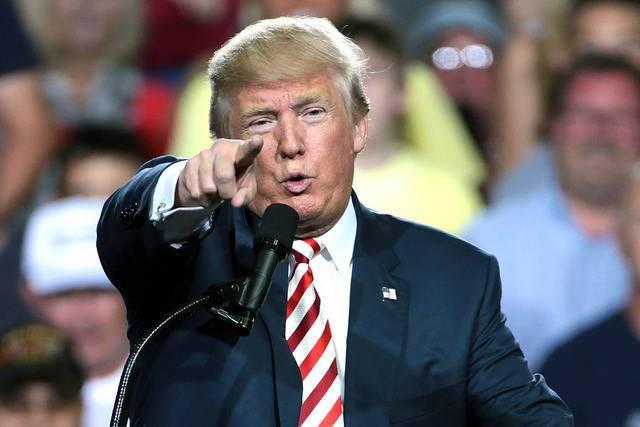
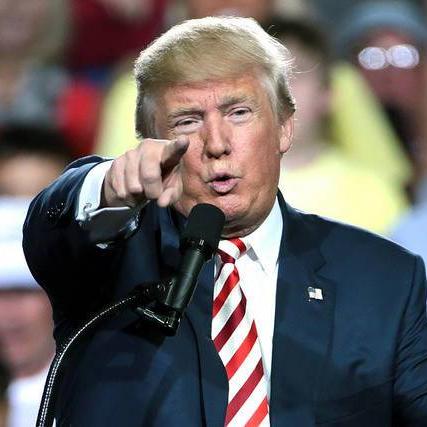
By Joel B. Stronberg
Walk into any ball park in the nation and you’ll hear the hawkers refrain: "Programs, get your programs! You can’t tell the players without a program." What about the Donald Trump administration?
Here in Capital City, as of May 22, the players’ program is written mostly in blank verse. According to the Washington Post’s tote board: Of the 557 key Trump administration positions requiring Senate confirmation, 33 have been filled, while only 56 have been nominated.
This progress compares to the same date in prior administrations rather poorly.
The Donald’s accusations, notwithstanding, the sparsity of key agency personnel cannot be blamed on Senate Democrats. The president himself is to blame for languorous pace.
The State Department leads the pack, with a total of 114 vacancies and only five approved appointments. Confirmed nominees include: Secretary of State Rex Tillerson; Nikki Haley as representative to the United Nations; Tulinabo Mushingi as Ambassador to the Republic of Senegal/Guinea-Bissau; Todd Phillip Haskell as Ambassador to the Democratic Republic of the Congo; and David Friedman as Ambassador to Israel.
Ten others have been nominated or announced but have not been formally submitted to the Senate. These include Tillerson’s deputy secretary and the deputy secretary for management, and the ambassadorships to China, Russia, the U.K. and Japan.
The administration has not yet announced nominations for the ambassador posts in Korea, Saudi Arabia, Australia or most other nations. Filling these positions, for the most part, are career State Department personnel. Although not untended, the positions are being filled by caretakers hamstrung by a lack of direction from the White House and the uncertain status accorded all temps.
State is joined in this predicament by the Department of Energy and the Environmental Protection Agency -- two agencies facing potentially major policy and program course corrections.
Twenty-two positions at DOE require Senate confirmation. These include secretary (confirmed), general counsel and all the under and assistant secretarial offices. Today, 21 positions are vacant; of those, only the deputy secretary has been nominated.
Down the street from Energy, the Environmental Protection Agency has an equal number of confirmed appointees and nominees — one! Vacancies include the assistant administrators for water, air and radiation, chemical safety and pollution prevention, and enforcement and compliance.
How the president and his senior advisors intend to deal with the problem of temporary workers in key policy and management positions is not clear.
Looking around for some sign of what’s to come, one inevitably lands on the goings-on at the U.S. Department of Agriculture.
Sonny Perdue, the former two-term governor of Georgia, was sworn in just weeks ago as Secretary of Agriculture. Perdue wasted no time making his influence felt.
As reported in the Omaha World-Herald: "On his second day in office . . . Perdue helped persuade Trump not to withdraw from the North American Free Trade Agreement with Mexico and Canada, arguing that doing so would hurt U.S. farmers.Trump has said he will work to renegotiate the pact instead."
Swaying presidential minds isn’t all the secretary has been up to in his brief month in office. It appears that Perdue and the White House are zeroing in on other key players on the Ag team.
The four most talked-about candidates have several things in common. All are Midwesterners and agree with Perdue’s desire to focus on international trade and marketing — even to the exclusion of rural development. Three have leadership experience, either at USDA during previous Republican administrations or in state government, while the fourth headed up Trump’s USDA transition team.
Three are closely associated with big agribusinesses, particularly major chemical and biotech giants, and the fourth is a self-avowed climate denier. To put names to characteristics.
Steve Censky appears slated for the No. 2 slot as Perdue’s Deputy Secretary. He has been CEO of the American Soybean Association (ASB) for the past 21 years. Prior to his gig as CEO, he served at USDA under both the Reagan and G.W.H Bush administrations.
The Soybean Association is a producers group listing among its priorities: trade expansion, including with NAFTA and Asia-Pacific nations; tax reform, including repeal of estate taxes and full and immediate expensing of capital investments.
The Association wants to abolish the proposed Waters of the U.S. rule (WOTUS) and encourages: "developing a definition of sustainable agriculture that encompasses profitable, intensive production… encourages consumer acceptance of biotechnology enhanced products… supports biotechnology, commercial fertilizer, and commercial crop protection products and believes…any definition of “sustainable agriculture” includes the use of these products."
Bill Northey is Iowa’s Secretary of Agriculture and appears destined to become the first to fill the newly created position of USDA Under Secretary for farm production and conservation. As Tom Philpott over at Mother Jones put it, Northey is: "Tightly aligned with the Big Ag interests that dominate Iowa, Northey's campaign donor list (source) reads like an agribiz directory… Monsanto, Dow AgroSciences, DuPont, Syngenta ... the Iowa Cattleman's Association and the China-owned pork giant Smithfield ... and … Archer Daniels Midland."
Ted McKinney was appointed by then Gov. Mike Pence as Indiana’s state agriculture director in 2013. According to Washington odds-makers and the agricultural grapevine, McKinney will be joining the now Vice President Pence in D.C. as the USDA’s Under Secretary for trade and foreign agricultural affairs.
McKinney’s background is remarkably similar to Kerensky. It includes having been a C-suite executive with Elanco Animal Health -- a division of Eli Lilly — and years of service on the government affairs team for seed/pesticide giant Dow AgroSciences.
It will undoubtedly seem like old times at USDA, as McKinney is the co-founder and one-time executive director of the Council for Biotechnology Information.
I thought it curious the Council’s website is not Councilsomething.org or even .com. Its LinkedIn page has it as http://gmoanswers.com. (GMO stands for genetically modified organisms.)
According to its website, the organization’s funding comes courtesy of BASF, Bayer, DuPont, Monsanto, Dow AgroSciences and Syngenta. The organization "stand[s] 100 percent behind the health and safety of the GM crops on the market today, but..acknowledge[s] …we haven’t done the best job communicating about them – what they are, how they are made, what the safety data says."
The likely fourth horseman of the potential apocalypse at USDA is Sam Clovis. Dr. Clovis earned a B.S. degree in political science from the Air Force Academy and his DPA* from Iowa’s Morningside College, where he taught business management and public policy classes.
His LinkedIn profile lists him as Chair and Professor at Morningside. Clovis is an advisor to President Trump and since the inauguration part of the temp team running USDA waiting for Perdue to arrive.
Clovis’ political creds include having been an advisor to Governor Perry in his unsuccessful bid to secure the 2016 Republican presidential nomination. After leaving Perry, he signed on to the Trump team and was seen frequently as a media spokesman for the campaign.
The good doctor made an unsuccessful bid to secure the Republican nomination for the U.S. Senate in 2014 — ultimately losing out to now Sen. Joni Ernst. His early Iowa reputation was built on his talk-radio show "Impact with Sam Clovis."
Clovis’ whispered nomination as the USDA Under Secretary for Research, Education and Economics is proving both confusing and troubling for the science community and environmental and clean energy advocates.
Confusing because this particular position is identified as USDA’s chief scientist—not political scientist, physical scientist. "The previous undersecretary, Catherine Woteki, has a PhD.D. in human nutrition and was previously the dean of the school of agriculture at Iowa State University. The current Acting Under Secretary, Ann Bartuska, has a Ph.D. in ecology and has worked in many scientific positions, including high-level positions at the U.S. Forest Service and the Nature Conservancy," wrote Steven Salzberg of Forbes.
Appointees going back at least through the Bill Clinton administration have all had recognizable scientific qualifications and experience. "This position is the chief scientist of the Department of Agriculture…a person who evaluates the scientific body of evidence and moves appropriately from there," Woteki told ProPublica.
Clovis’ climate record is troubling because he is an avowed skeptic. While chasing the senatorial nomination in 2014, he responded to a question about climate change and its anthropogenic causes thusly:
"I am extremely skeptical. I have looked at the science and I have enough of a science background to know when I’m being boofed…a lot of the science is junk not proven; I don’t think there’s any substantive information available to me… I’m not sure what climate change means." (emphasis mine)
No matter his politics, I respect any man who knows when he’s being boofed. I’m just not sure that such knowledge outweighs a total lack of any scientific training or background for USDA’s chief scientist. There is little in his background to suggest he understands the relationship of biomass to carbon sequestration or that he even cares.
Trump may also wish to think more carefully about Clovis’ nomination based on his Russian connections. There is a significant amount of information suggesting the doctor has had deep ties with executives at Gazprom, Russia’s state-owned gas giant.
Julia Ioffer, a contributing writer for Politico, reported last September of Clovis having been responsible for introducing Carter Paige into the Trumpian circle of advisors. Paige is in the group with Manafort, Flynn and others being investigated as part of the possible Russia conspiracy.
It is inconceivable that Clovis would not be questioned on the nature of his relationship with both Gazprom and Paige during his Senate confirmation hearings. I am not suggesting that Clovis has done anything improper. The reality is simply that President Trump might be wise to avoid adding any fuel to a fire already appearing to burn out of control. In return, he would likely rest easier at night and stand a chance of having his nominees confirmed more rapidly.
The USDA experience may well portend how Trump will fill the remaining 500 or so key agency positions requiring Senate confirmation. The four likely nominees discussed above confirm an emphasis of business interests over environment, trade and science.
They also seem to suggest the White House’s default candidate pool will be relatively well-known conservatives with some prior and proven connection to senior administration staff, e.g. Pence, Perry and even Trump, as well as to large corporate sources of campaign contributions.
Why The Donald has been so slow to fill these positions is something of a mystery. The importance to Trump’s agenda and that of many Congressional Republicans is not.
For Trump and company to have a chance of seeing core parts of their agenda accomplished before the 2018 mid-term elections, they will need to have their managers installed throughout the agencies. Temps of career civil servants and interim outside appointments cannot do what the administration has promised in most cases.
Temporary appointees do not have the legal standing necessary to effectuate the lauded magnitude of change. I would venture that most career government professionals lack the desire to decimate federal programs they have spent careers refining—even should they have the authority. In any event, few would presume to speak for a President who no one seems to understand.
Administrative incompetence and an unwillingness to operate within established practices may not be impeachable offenses. I can guarantee it is likely to turn out to be political suicide.
For climate defenders and supporters of a more moderate national agenda, that may not be such a bad outcome. In any event, The Donald and his Trumpeters can’t say they haven’t been warned.
*Note Clovis’ LinkedIn profile shows him having attended the University of Alabama between 1998 and 2006 at the same time he was earning is DPA at Morningside College. At least one account—the Washington Post—references his attendance at Alabama but also states the doctoral program was shut down shortly after 2006.
Table source: https://ourpublicservice.org/issues/presidential-transition/political-appointee-tracker.php
Featured Image: Flickr/Gage Skidmore
Joel B. Stronberg, Esq.,of The JBS Group is a veteran clean energy policy analyst with over 30 years’ experience, based in Washington, DC. He writes about energy and politics in his blog Civil Notion . He works extensively for public and private sector clients at and recently taken on the duties of managing partner for LAC Solar Light, Inc. a B-type corporation working in the Americas. Joel can be contacted at [email protected].
Certified Sustainability Practitioner Program, Advanced Edition


Leading Companies Move from Linear to Circular Economy
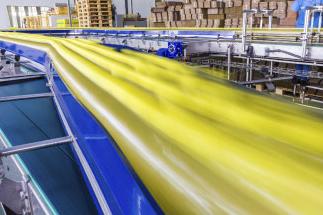

by Vikas Vij
In a linear economy, inputs and manufacturing process move in a single direction, and end products ultimately end up in landfills and oceans. Some of the leading companies are abandoning this traditional economy model and are gravitating toward the circular economy. The circular economy model is based on the recovery, reuse, and regeneration of materials.
The Conference Board has released a report, Business Transformation and the Circular Economy, which details how forward-thinking companies are making a shift from the linear economy to the circular economy. The circular model helps ensure that emissions and waste are minimized and materials retain their highest value at all times.
The report lays out the risks and rewards of undertaking this shift, and provides real-world case studies and recommendations, drawn from companies that are leading this transition. According to the report’s author Thomas Singer, businesses can reap impressive savings by adopting attributes of the circular economy – and at the same time, secure revenue opportunities by winning over the growing number of customers who seek products and services that align with their own sustainability goals.
The report highlights examples of seven companies that are at the forefront of the circular economy. These include:
Dell
Through a partnership with Goodwill Industries, Dell’s closed-loop recycled plastics program has expanded to over 90 product models that contain up to 15 percent recovered plastic.
DuPont
DuPont has developed solutions for meat packaging that can help customers save as much as 80 percent of the packaging weight as well as double the shelf life of the product, reducing in-store food waste by half.
HP
Through HP’s Instant Ink service, consumers’ internet-connected printers recognize when ink cartridges are low and automatically ship new cartridges. The new cartridges include return envelopes, which enables HP to close the loop by incorporating as much as 80 percent of the plastics from returned cartridges into the manufacturing of new cartridges.
Interface
Modular carpet maker Interface has a 2020 goal of obtaining all of the company’s raw materials from rapidly renewable bio-based materials or recycled waste streams, and the company is currently 60 percent of the way toward meeting this target.
Kimberly-Clark
In 2011, Kimberly-Clark launched the RightCycle initiative with the aim of converting hard-to-recycle products into useful new items. Now the company works on these initiatives with customers across more than 200 sites around the world.
Philips
For Philips, circular economy initiatives largely hinge on the notion of switching from selling products to selling services. For example, “light as a service” is one of its primary circular economy initiatives. This business represents a shift away from selling a product (light fixtures) to providing a service (lighting solutions).
Waste Management
The company’s circular economy focus has widened over the years to look not only at capturing and returning waste materials to the production loop, but also identifying ways to produce items that are ultimately more recoverable.
Source and Image: Conference Board
3p Weekend: 8 Startups Crafting the Future of Urban Agriculture
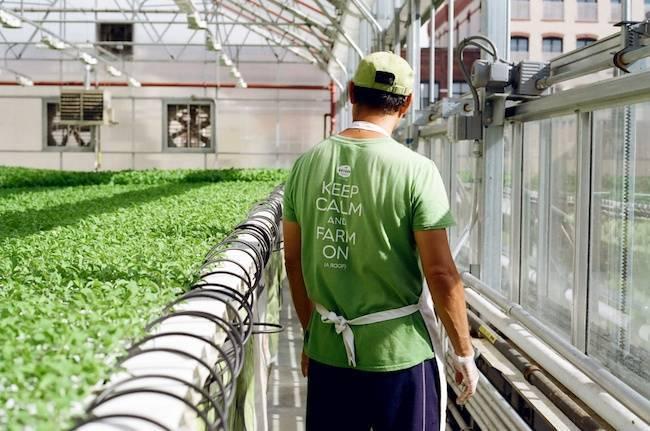

With a busy week behind you and the weekend within reach, there’s no shame in taking things a bit easy on Friday afternoon. With this in mind, every Friday TriplePundit will give you a fun, easy read on a topic you care about. So, take a break from those endless email threads, and spend five minutes catching up on the latest trends in sustainability and business.
Vertical farming is not a new concept. Farmers used it for centuries to grow more food in less space. But over the past decade, innovative startup companies reclaimed this forgotten method to bring sprawling farms into controlled spaces in dense urban neighborhoods.
Once a niche market, the urban farming space is booming -- and many upstarts gained fast acclaim only to sputter out. But as the industry gains more profile (it was a hot topic at this year's Sustainable Brands conference in Detroit), a growing number of companies are turning greens into gold.
1. Gotham Greens
In 2008 while living in New York City, longtime friends Viraj Puri and Eric Haley had a big idea. Their concept of indoor, urban greenhouses seemed far-fetched at the time. But as the industry grew around them, their startup Gotham Greens got in solidly on the ground floor and is now known as one of the pioneers of the urban agriculture space.
They earned props from New York Gov. Andrew Cuomo, who assisted the opening of their 60,000-square-foot space in Queens two years ago. That same year, they opened their largest greenhouse yet on Chicago's South Side. And the startup's leafy greens won fast acclaim with shoppers seeking healthy, local produce.
"Simply put, we grow premium quality local produce in high tech, climate controlled greenhouses, year round," Puri told Bond Street earlier this year. "That means, even in the dead of winter, we provide our customers— supermarkets, restaurants, caterers—with fresh produce within a couple of hours of harvest."
2. Bowery Farming
Entrepreneur Irving Fain is paving a new path in urban agriculture: what he calls "post-organic" farming. He claims his high-tech greenhouse can produce crops 100 times faster than conventional agriculture. And it renders pesticides, soil stimulants and other additives obsolete.
Located in Kearney, New Jersey, Bowery Farming grows lush greens and herbs all year round. Its automated system can "sense" when plants are ready to be plucked, ensuring peak freshness and less waste.
So far, the company's 'post-organic' greens are available in two Manhattan restaurants, a pair of Whole Foods Market stores in New Jersey, and Foragers Market in New York's Chelsea neighborhood, 3p's Jan Lee reported.
3. Square Roots
Elon Musk is working on the next generation of electric vehicles, clean energy and space exploration. But his brother took a decidedly different path.
Kimbal Musk ran a pair of all-local restaurants for over a decade. In 2011, he founded a nonprofit to teach kids about agriculture, which has installed gardens in over 300 schools, reports Business Insider.
Earlier this year, the younger Musk took things a step further with an urban farming accelerator that fuses Silicon Valley startup culture with his desire to shake up the American food system.
Based in Brooklyn, New York, Square Roots consists of 10 small farms in steel shipping containers. Young entrepreneurs can partake in the program to test their urban farming ideas in a controlled environment. Business Insider took a tour of the farm in January. You can check it out here.
4. AeroFarms
AeroFarms came on the scene in 2004 and was one of the first in the game. Over 10 years, the startup built eight farms located on delivery routes and near population centers to get produce from farm to plate with fewer transit miles.
When it opened in 2015, the company's headquarters in Newark, New Jersey, was the world's largest indoor vertical farm. Using modular, stacked trays, the new HQ can produce around 2 million pounds of baby greens annually, CEO David Rosenberg told Fast Company. And it yields crops around 130 times faster than conventional agriculture.
“This isn’t about one farm, this is about changing the way we grow food as a society,” Rosenberg told FastCo. “So this is a showcase, where it’s not just about demonstrating the technology but how we grow and how we get to economies of scale to make the economics work.” The company hopes to open 25 farms in the next five years.
5. Plenty
CEO Matt Barnard calls the company's headquarters and greenhouse in South San Francisco "the cathedral." Like Bowery Farming, this Silicon Valley startup claims its practices make things like GMOs, pesticides and soil additives unnecessary.
The company uses heirloom seeds and a controlled, vertical farming setup. Barnard told FastCompany these practices and more make Plenty's concept faster and more scalable than its competitors in the overflowing urban ag space. He claims the startup can grow food 350 times faster than conventional agriculture. Pretty impressive, to say the least.
6. Detroit Dirt
Detroit Dirt is out to turn vacant land parcels into urban farms that feed locals while revitalizing their communities.While it's primary focus is compost, this 5-year-old company is steadily spreading the community garden model across the city. Its farms may not be as high-tech as some of the others on our list. But unlike congested cities like New York and San Francisco, Detroit has plenty of space to spare -- and here, recommissioning forgotten parcels into productive farmland makes more sense than a multimillion-dollar vertical farm.
7. Freight Farms
Most Americans know South Boston as little more than the setting for a mob movie. But the neighborhood that locals call "Southie" is now home to a burgeoning urban farming sector.
Friends Jon Friedman and Brad McNamara noticed New England's dependence on imported foodstuffs, and South Boston's ongoing problems with food security. In 2011, the pair launched a Kickstarter campaign to help solve both problems with indoor farming.
Soon after, Freight Farms was born. And it's not just one farm. In a style fitting with South Boston, Freight Farms' model is of the "teach a man to fish" variety: The company sells tricked-out freight containers to would-be farmers across the region. The containers are designed to be mostly self-sustaining -- meaning even those without agriculture experience can take part. The Freight Farms team supports these self-made farmers with ongoing trainings and webinars.
Julia Pope, who works in farmer education and support at the organization, told the Guardian that locals can "find the freight containers squeezed between two buildings, in a parking lot, under an overpass or virtually anywhere in the modern urban terrain."
The company has now spread from Boston to Canada, and it estimates that 100 of its mini-farms now operate in the U.S. alone.
8. BrightFarms
BrightFarms grew out of nonprofit New York Sun Works in 2006. Its first project was the Science Barge, "a prototype, sustainable urban farm and environmental education center on the Hudson River." But the startup quickly veered in another direction -- opening a consultancy to help other aspiring urban farmers make their vision a reality.The company also operates three of its own farms, located in Pennsylvania, Virginia and Illinois. And the concept is generating investor attention, attracting a $30.1 million round of Series C equity financing late last year.
Image credits: 1) and 2) courtesy of Gotham Greens; 3) courtesy of AeroFarms (all press use only)
Climate Progress Continues Despite Changes in the Federal Administration
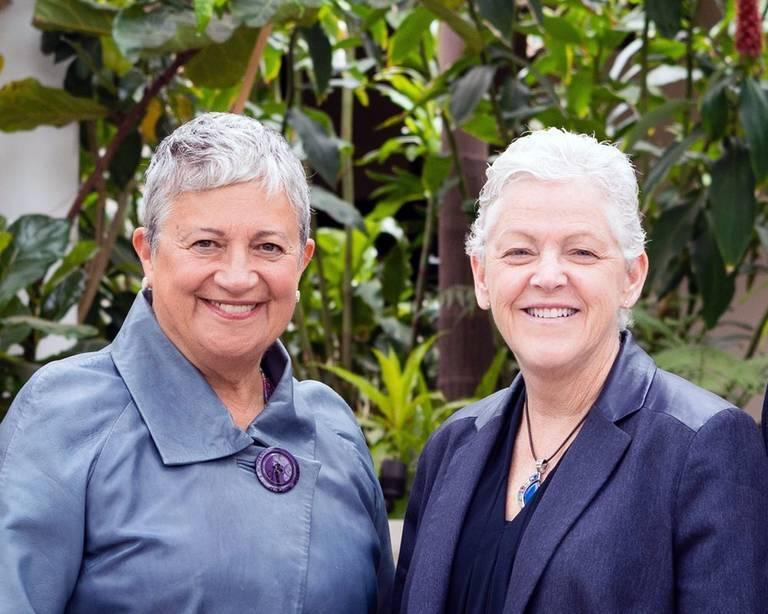

“We are in one of those moments where people are feeling, if not despair, at least a lot of discouragement about the climate movement and how things are going, particularly in the United Sates,” said Mary Nichols, chair of the California Air Resources Board.
But she remains optimistic. “I spend a lot of time trying to lift people up and let them know it’s not as bad as it looks and, in fact, good things are happening.”
Nichols leads the state of California’s efforts to implement climate change regulations in general and its forward-looking cap-and-trade program specifically. At the front line of change, she believes that progress is being made in California and that the state’s path will ultimately help shape national and international progress in the long run.
Gina McCarthy, administrator of the U.S. Environmental Protection Agency under President Barack Obama, concurs with Nichols’ assessment of the human response to state of the climate movement in the U.S.
“Right now, it is easy to get discouraged,” she told 3p. “But we have to remember the federal government only got into the climate gig eight years ago. But many of us have been working on climate change for a really long time. If you know the history of the environmental movement and how change is made, it is full of fits and starts, and there are ebbs and flows.”
Nichols and McCarthy were together in Los Angeles on May 17 at the 10th anniversary celebration of The Climate Registry. The Registry is a nonprofit organization that that helps organizations and governments build capacity in greenhouse gas measurement and reporting so they can manage and reduce carbon. The Registry’s programs not only provide important data that helps governments make more informed carbon policy, but they also provide evidence for customers and investors of companies who claim they are voluntarily reducing their carbon footprint.
Both women praised the Registry for its foundational role in advocating for and working to produce credible carbon emissions measurements and systems of reporting, “Without the Registry, the cap-and-trade system could never have come into existence. It wouldn’t have anything like the credibility that it does have,” Nichols told us. “When we meet with people from around the world who are interested in doing something like California has done, the first thing we tell them is you have to have better data, you have to have credible data that people have confidence in or you won’t ever have a market.”
While Nichols praised the confidence that comes from having good data about corporate emissions, McCarthy focused on values. “It’s up to us to reflect the values we care about: the core values that bring us together every day and make this the best country in the world to live in." She counted clean air, clean water, healthy land and a stable community among those values. “If we can just express that, just continue to work together, we can make incredible progress in moving forward.”
“Right now, the federal government is not doing what we want it to do, and I think the people that live in this country and care about the things we care about have to make sure we get together and remind ourselves it’s up to us to do something about it," McCarthy added. "It’s still going to be important that we hold people’s feet to the fire.
"When the federal government takes a pass, it doesn’t mean that our work stops. It means you have to rev up and work harder and remind them what our core values are.”
Does it matter if the federal government isn’t leading on climate? McCarthy said that typically by the time the federal government gets around to addressing an issue, 95 percent of the country has already embraced the required change because of actions at the state, regional and municipal levels. “And then the federal government claims it’s the most innovative thing that’s ever happened. But that’s okay, because they get the kudos and life goes on -- and we grab that other 5 percent."
With changes in the federal government’s climate change policies, what happens next?
McCarthy underscored the importance of state and local governments, as well as grassroots organizations and the business community.
Nichols looks toward more innovation and community involvement. ”One of the things we need are people who represent various parts of the community who will sit down with us and work to find ways that will be useful to moving the agenda forward,” she said.
“Even when people believe that climate change is an issue, that doesn’t mean that it necessarily resonates with them. They can’t always take action. They need practical solutions. They need all the dull boring stuff we do at the Air Resources Board.”
McCarthy also pointed out the role of the consumer. “Because of social media, we have the opportunity to express our core values in many more ways than simply who we vote for. We can decide who we buy things from. This is what you can do when you have a credible entity like The Climate Registry that tells you what performance is actually real and what isn’t real.”
She cited credible, voluntary carbon-reduction programs from companies like Walmart and Home Depot. “You have to support these voluntary initiatives that allow companies that are doing good to get rewarded for it."
She says the opposite is true, too. When the CEO of Uber was invited to join a business group advising President Donald Trump, customers who didn’t approve simply deleted the app. The next day, Uber’s CEO had rethought his position. “Voluntary programs do matter,” McCarthy said.
And she's convinced that change comes from the grassroots -- where the environmental movement started, stating simply: “It’s only when you get incredibly annoying does any level of government pay any attention."
Image credit: Rob Greer Photography